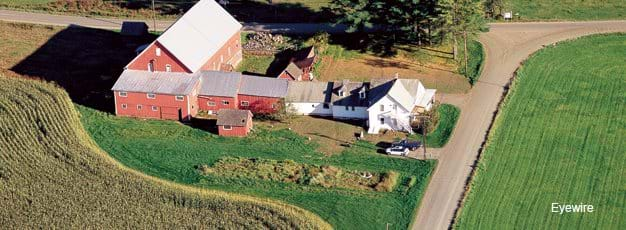Changing the Definition of a “Farm” Can Affect Federal Funding

USDA defines “farm” broadly as any operation with the potential to produce at least $1,000 worth of agricultural goods in a given year. Based on 2006 prices, an operation could be considered a farm for growing 4 acres of corn, or a tenth of an acre of berries, or for owning one milk cow. Consequently, most U.S. establishments classified as a farm produce very little, while most agricultural production occurs on a small number of much larger operations.
The definition of a farm affects farm statistics and influences the design and delivery of Federal farm programs. The definition also has implications for States because each State’s share of the national farm population is used to help allocate some Federal funding. In fiscal year 2009, for example, Congress allocated more than $200 million, based partly on the distribution of the farm population, for land-grant universities to conduct agricultural research and disseminate information through the Cooperative Extension Service. USDA’s Natural Resources Conservation Service used the number of farms in each State, among other factors, to allocate over $1.3 billion to States for several conservation programs in 2009. USDA’s Farm Service Agency apportioned more than $775 million in farm loan program funds in 2009, primarily using each State’s number of farmers.
USDA’s farm definition has remained unchanged since 1975. However, the increasing concentration of agricultural production on large farms and the proliferation of small “rural residence” farms with little or no production have led to proposals to narrow the definition of a farm to more closely target “actively engaged” farmers.
Any change in the farm definition could have far-reaching consequences since the characteristics of farms vary from place to place. For example, changing the annual farm sales threshold to $10,000 would result in a redistribution of the share of farms located in each State. Under this scenario, almost two-thirds of all States would experience changes in their share of farms of less than 0.5 percent (in either direction).
For several States, however, the change would be greater. Because of the relatively large number of very small farms, Texas’s share of U.S. farms would drop more than 3 percent, while Tennessee’s share would decline more than 1.5 percent. In contrast, Iowa’s share of farms would grow more than 2 percent, while the shares of Nebraska, Illinois, and California would increase more than 1 percent.
Exploring Alternative Farm Definitions: Implications for Agricultural Statistics and Program Eligibility, by Erik O'Donoghue, Robert A. Hoppe, David Banker, and Penni Korb, USDA, Economic Research Service, March 2009


